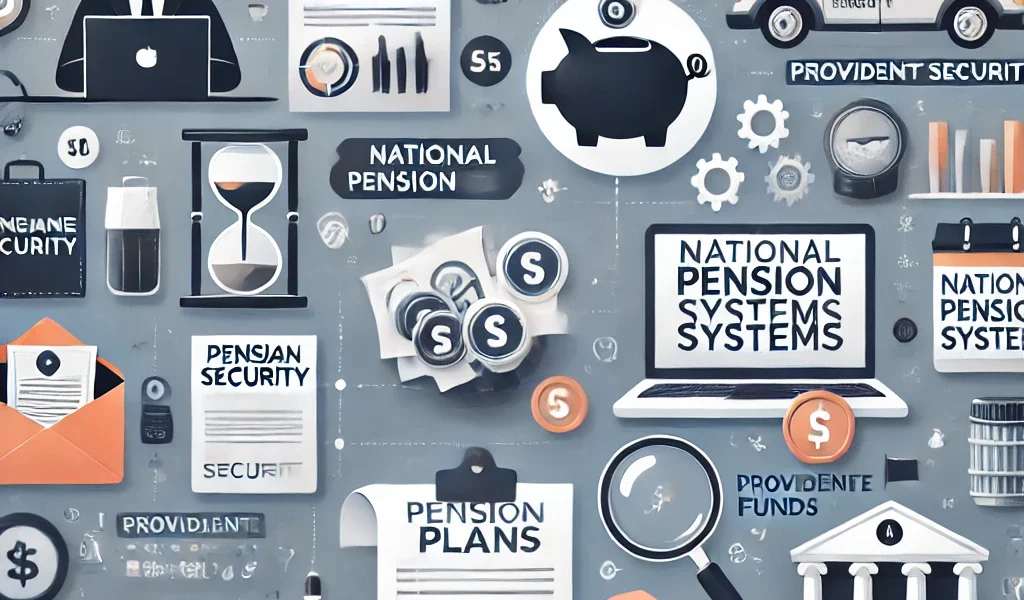Introduction
Retirement planning is essential for ensuring financial security in old age. Governments worldwide offer various retirement schemes to help citizens save for their golden years. These programs provide tax benefits, guaranteed income, and long-term financial stability. In this article, we will explore the top government retirement schemes you should know about, their benefits, and how they can help secure your financial future.
1. Why Government Retirement Schemes Matter
Government-backed retirement schemes are designed to provide financial security to individuals post-retirement. Here are a few reasons why these schemes are important:
- Guaranteed Income: Unlike private pension plans, government schemes often provide guaranteed monthly payouts.
- Tax Benefits: Many government retirement schemes offer tax exemptions, reducing your taxable income.
- Low-Risk Investments: Since they are government-backed, these schemes have minimal financial risk.
- Encouragement for Savings: These plans incentivize individuals to save for retirement through employer contributions and tax benefits.
2. Top Government Retirement Schemes
1. Social Security (United States)
- A federal program that provides monthly benefits to retirees.
- Funded through payroll taxes under the Federal Insurance Contributions Act (FICA).
- Benefits depend on lifetime earnings and age at which benefits are claimed.
Eligibility:
- Must have earned at least 40 work credits (approximately 10 years of work).
- Benefits start as early as 62, with higher benefits for those who delay until 70.
Key Benefits:
- Provides inflation-adjusted income.
- Spousal and survivor benefits are available.
2. Employees’ Provident Fund (EPF) – India
- A mandatory savings scheme for salaried employees in India.
- Managed by the Employees’ Provident Fund Organization (EPFO).
Eligibility:
- Employees earning up to INR 15,000 per month must contribute.
- Employers match employee contributions, making it a valuable long-term savings plan.
Key Benefits:
- Lump-sum withdrawal upon retirement.
- Partial withdrawals allowed for housing, medical, and education expenses.
- Tax benefits under Section 80C of the Income Tax Act.
3. Canada Pension Plan (CPP) – Canada
- A contributory pension plan for Canadian workers.
- Provides retirement, disability, and survivor benefits.
Eligibility:
- Contributions made through employment or self-employment income.
- Benefits start at age 60, with increased payments for those who delay.
Key Benefits:
- Lifetime pension benefits adjusted for inflation.
- Disability and survivor benefits for dependents.
4. National Pension System (NPS) – India
- A voluntary retirement savings scheme managed by the Pension Fund Regulatory and Development Authority (PFRDA).
Eligibility:
- Open to all Indian citizens aged 18-65.
- Contributions can be made regularly, and funds are invested in equity and debt instruments.
Key Benefits:
- Flexible investment options.
- Partial withdrawals allowed for specific needs.
- Tax benefits under Sections 80C and 80CCD(1B).
5. State Pension – United Kingdom
- A pension plan funded by National Insurance (NI) contributions.
Eligibility:
- Must have at least 10 years of NI contributions.
- Full state pension available with 35 years of contributions.
Key Benefits:
- Indexed to inflation under the triple-lock system.
- Provides a secure retirement income.
6. Australia’s Superannuation Scheme
- A compulsory savings scheme where employers contribute a percentage of employees’ salaries to a superannuation fund.
Eligibility:
- Mandatory for employees earning over AUD 450 per month.
- Contributions grow tax-free and can be accessed after retirement.
Key Benefits:
- Tax benefits on contributions and withdrawals.
- Various investment options for higher returns.
7. Public Service Pension Plan – Various Countries
- Governments offer pension schemes specifically for public sector employees.
Eligibility:
- Typically available to government employees, including military personnel and civil servants.
Key Benefits:
- Higher pension benefits compared to private sector plans.
- Guaranteed income post-retirement.
3. How to Choose the Right Government Retirement Scheme
Selecting the right retirement plan depends on your income, financial goals, and eligibility. Here are some key factors to consider:
1. Evaluate Your Retirement Goals
- Estimate the amount you will need post-retirement.
- Consider factors such as inflation, healthcare costs, and lifestyle expenses.
2. Understand Contribution Requirements
- Ensure that you meet the minimum eligibility and contribution requirements.
- Maximize employer contributions where possible.
3. Compare Tax Benefits
- Some retirement schemes offer better tax benefits than others.
- Evaluate how contributions and withdrawals are taxed.
4. Check Flexibility and Withdrawals
- Consider whether the scheme allows partial withdrawals.
- Ensure that the plan aligns with emergency financial needs.
5. Consider Inflation and Investment Growth
- Plans that adjust for inflation help maintain purchasing power.
- Diversified investment options ensure better long-term returns.
4. Steps to Secure a Strong Retirement Fund
1. Start Early
- The sooner you begin, the more time your investments have to grow.
2. Maximize Contributions
- Contribute the maximum allowed to take full advantage of government benefits.
3. Diversify Your Investments
- Supplement government schemes with personal investments in mutual funds, stocks, and real estate.
4. Stay Updated on Policy Changes
- Government policies change frequently; staying informed ensures you maximize benefits.
5. Consult a Financial Advisor
- Professional advice can help optimize your retirement planning strategy.
Conclusion
Government retirement schemes play a vital role in providing financial security post-retirement. Understanding the various options available allows you to make informed decisions that align with your retirement goals. By selecting the right scheme and maximizing contributions, you can ensure a comfortable and worry-free retirement. Start planning today to secure your future!



